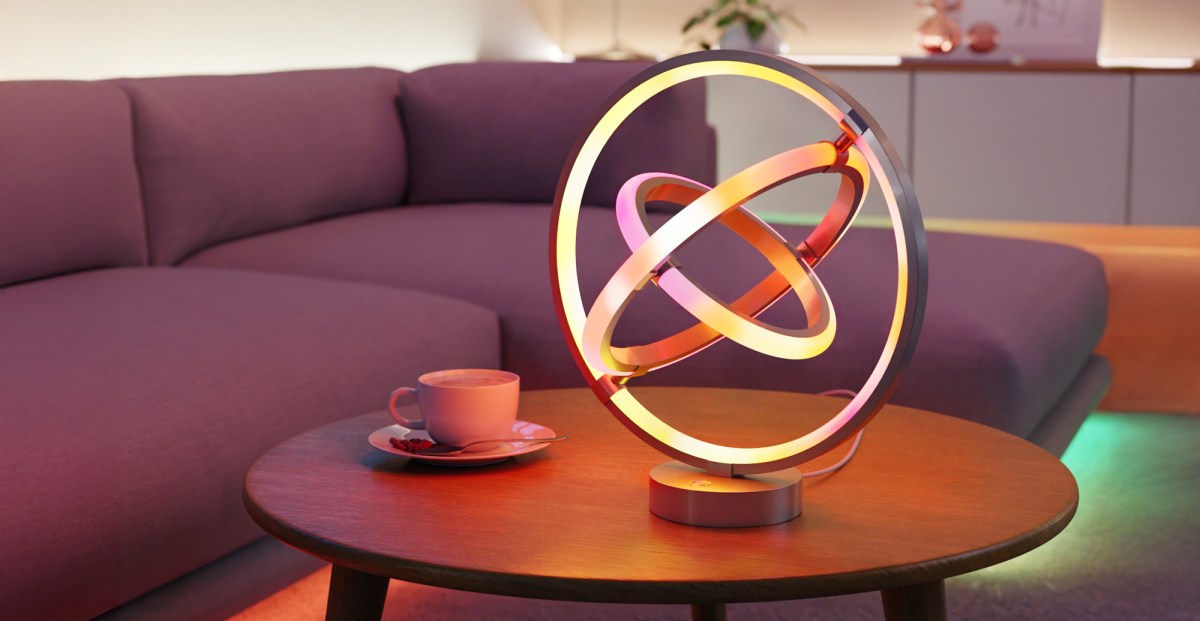Lepro Introduces AI Lighting Pro Series with Built‑In Microphones

Key Points
- Lepro launches AI Lighting Pro series with built‑in microphones and LightGPM voice assistant
- Four products: light strip, rope light, rail‑thin floor lamp, and table lamp with movable rings
- Lights support RGB, a 2700K warm‑white mode, and Wi‑Fi connectivity
- Voice commands can control basic functions and generate mood‑based lighting patterns
- Compatible with Alexa and Google Assistant while offering standalone operation
- Always‑listening microphones raise privacy considerations for users
- Series expected to launch later in the year, pricing not yet announced
Lepro has launched its AI Lighting Pro series, embedding microphones and a proprietary voice assistant called LightGPM directly into its smart lights. The lineup includes a light strip, rope light, product descriptions mention RGB, a warm‑white mode, and Wi‑Fi connectivity that works with Alexa and Google Assistant. By eliminating the need for a separate controller, the lights can respond to commands such as turning on, changing colors, and generating mood‑based lighting patterns. The move adds another always‑listening device to homes, raising questions about privacy and convenience.
Lepro’s AI Lighting Pro Series
Lepro has introduced a new family of smart lighting products under the AI Lighting Pro name. Each fixture in the series incorporates a microphone and a built‑in voice assistant known as LightGPM, allowing users to control the lights without a separate hub or smart speaker. The series is positioned as a standalone solution that can also integrate with existing voice platforms such as Alexa and Google Assistant.
Product Lineup and Features
The AI Lighting Pro lineup consists of four distinct products: a light strip, a rope light, a rail‑thin floor lamp, and a table lamp with interchangeable rings. The light strip offers standard RGB capabilities, while the rope light adds diffusion for a smoother appearance. The floor lamp provides both RGB and a 2700K warm‑white mode. The table lamp features three independently movable rings that can create dynamic lighting effects.
All models are equipped with Wi‑Fi connectivity, enabling remote control and integration with broader smart‑home ecosystems. The built‑in microphone allows the lights to listen for the wake phrase “Hey Lepro,” after which LightGPM can execute basic commands such as turning the lights on or off, adjusting brightness, and changing colors.
Advanced Voice Interaction
Beyond simple on/off functions, LightGPM leverages a large language model to interpret more nuanced requests. Users can ask the system to generate lighting patterns that match specific moods or activities, for example, “I’m doing yoga” or “I’m a very stressed‑out Mets fan.” This capability aims to provide a more personalized lighting experience without requiring a separate smart speaker.
Integration with Existing Assistants
While LightGPM operates independently, the AI Lighting Pro fixtures remain compatible with popular voice assistants. Users who prefer Alexa or Google Assistant can still control the lights through those platforms, preserving flexibility for households with established smart‑home setups.
Privacy Considerations
The inclusion of always‑on‑listening microphones in lighting fixtures raises privacy concerns. Lepro’s approach adds another device that continuously monitors ambient sound for wake words, similar to trends seen in other smart‑home products such as robot vacuums and smart speakers. The company has not detailed how audio data is processed or stored, leaving consumers to weigh the convenience of voice‑controlled lighting against potential privacy implications.
Market Outlook
Lepro’s AI Lighting Pro series reflects a broader industry move toward integrating voice control directly into a wider range of home devices. By eliminating the need for a separate controller, the company hopes to simplify user interaction and differentiate its products in a competitive smart‑lighting market. The series is slated for release later in the year, though pricing and specific launch dates have not been disclosed.